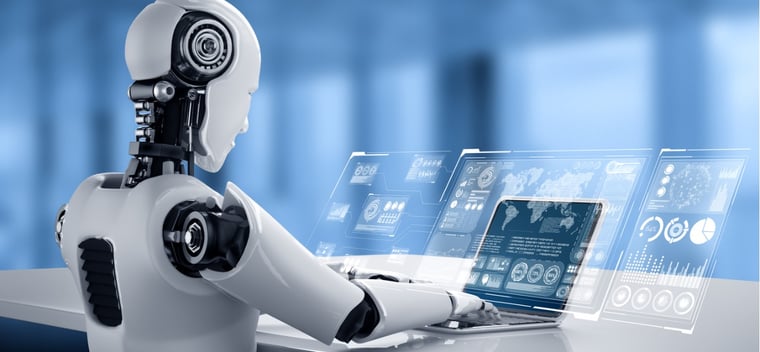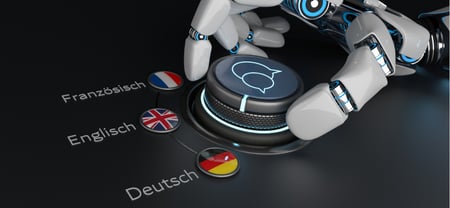What is Machine Translation? Guide to MT Benefits & Uses

Machine Translation (MT) can be your best friend in translating content quickly, cost-effectively, and efficiently. You won’t be surprised that it is essentially taking text from one language, putting it into a machine (AI-driven digital technology), and having the text come out in another language.
It can translate large volumes of content that would take a human translator days or months at a cost that would often be business-prohibitive. So, is machine translation the magic bullet?
No. But it is a fantastic tool. As with all tools, someone still needs to choose the right one and keep an eye on things. As a Language Services Provider (LSP), our clients often come to us with a small understanding of MT and feel like it’s the best route for them.
We then take over and put a framework in place. We consider what type of machine translation they need, which engine is best positioned to accomplish their goals, and what the workflow should be.
In this article, we’ll look at the considerations you should go through to make MT work for you.
Types Of Machine Translation
Let’s just get this question out of the way - is MT Google Translate? Yes. In the same way a World War 1 era biplane is a plane. Would you want to defend your country today with a biplane or take your family on holiday in one? Probably not.
There are three main types of MT:
- Statistical – This uses machine learning to analyze large volumes of text. Statistical patterns are found, and the engine decides the best translation based on all the raw data it has accumulated.
- Rule-based – Linguists create rules for the translation and enter these rules, along with dictionaries, glossaries, terms, and the like, into software to create a set of guidelines for the translation.
- Neural – Neural MT also uses machine learning and large datasets to train engines that can recognize sentence structures and use continual learning to translate sentences.
And there’s a fourth option:
- Hybrid – This is when you combine two of the other three types of MT. Typically, when you get your tech stack right, you obtain a more accurate result without any more human involvement.
When To Use MT And Not Human Translation
There’s no hard and fast rule to choosing between machine and human translation, just guidelines that we suggest to our clients. Usually, it comes down to factors like volume and visibility of content, source and target language, timescales, and budget. Machine translation usually needs a human touch to make sure nothing has linguistically slipped through the net.
MT is great for large volumes of internal comms, things that aren’t public facing, content that needs to be archived, technical texts (instruction manuals), product reviews, or user-generated content where consumers are only expecting to get a flavor of the text.
MT might also be great to get chatbots rolling in opening conversations with customers (we know they’re chatbots, and no one even tries to hide it anymore), but there’ll probably come a point where a human needs to step in. Still, MT’s done a lot of the groundwork.
Advantages Of Machine Translation
Machine translation can do huge amounts fast and inexpensively. It can work for you 24/7 without needing colleague support or an HR department.
It’ll greatly reduce the time you need human translators, who are still important to the process but more expensive. Now, they’ll only need to double-check and clean up the translations. This is called review and post-editing.
Limitations Of Machine Translation
MT tends to need the human review and post-editing we just mentioned. Maybe not always, but most of the time. There are different levels of machine translation review:
- Raw MT – No proofreading or human interaction at all. The translated material isn’t checked for any deficiencies. It's best that this is kept for high-volume, minimal-visibility translations.
- AI-Enabled MT – In this instance, several additional steps are undertaken that often greatly improve the output of the machine translation. These steps include source quality improvements, the selection of a the proper machine translation engine and an automatic quality check that is optimized for common machine translation errors.
- Hybrid or Post-Editing– A linguist’s time is spent making sure the translation is properly localized to the target audience.
- Statistical - In which a statistically significant sample of a text is reviewed for quality in an effort to understand the quality of the full text.
Machine translation can have a place in marketing, advertising, or public facing content that can affect your brand image, however, it’s recommended to proceed with caution and expert guidance. A significant amount of setup, testing, and even machine translation testing is often required to ensure that a brand isn’t negatively affected.
The Future Of Machine Translation
We all hear about the advancements in AI in several industries, and it’s no different with language services and MT. It’s getting better and better all the time. The algorithms, the software, and the data being fed into the engines all adds up to saving human resources for where they’re needed.
At LinguaLinx, our AI-enabled MT is constantly being trained and updated to deliver the best quality and most accurate translations. It’s an ongoing process with obvious benefits, and we’re committed to it.
Is MT Right For Your Translation Needs?
That depends on your translation needs. It is, however, likely that it can help in some form. As always, partner with a good LSP, and they’ll take you through the type of MT that’s best for you, how much post-editing (if any) is required, and help work with you to maximize current time for future requirements as well.
MT, used correctly, can help you quickly localize into different marketplaces and do a lot of the hard work for you without needing the complexities of a team of linguists.
Get A Quote For Your MT Project
Machine Translation (MT) offers incredible speed and cost savings for translating large volumes of content, but as we've seen, it's not a one-size-fits-all solution. MT can handle massive amounts of data quickly and efficiently, but it often requires human review to ensure accuracy and cultural relevance, especially for public-facing materials. The key takeaway is that MT works best when paired with expert oversight and post-editing to refine the results and avoid miscommunication.
By understanding the different types of MT, when to use it, and the role of post-editing, you can leverage the power of machine translation while maintaining high-quality standards. The future of MT is bright, and as the technology continues to advance, it will play an even larger role in global communication.
Explore How MT Can Work for You
If you're considering MT for your translation projects, LinguaLinx is here to guide you through the process. With our ISO 17100 and ISO 9001 certifications, plus over 20 years of industry experience, we’ll ensure your translations meet the highest standards of quality and accuracy. Contact us for a free consultation today!






